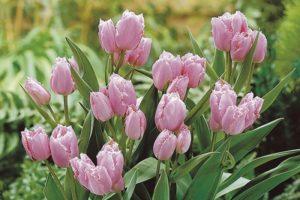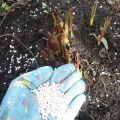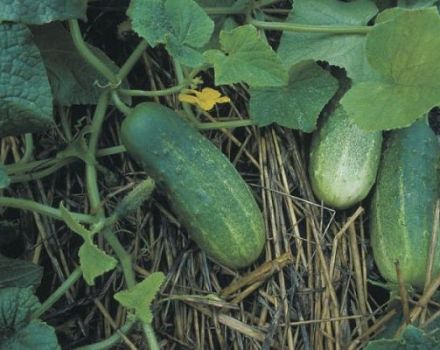How and when to transplant tulips in the fall from one place to another
Transplanting all varieties of tulips in autumn is a crucial stage on which the further health and abundance of flowering plants depends. Tulips are one of the first to start blooming in a flower bed, and in order to ensure an early process, it is important to think about it in advance and transplant the bulbs correctly in the fall.
Reasons for transferring from one place to another
Plants should be transplanted for a number of reasons, the main of which are the following:
- If flowers grow in one place for a long time, they begin to degenerate.
- Separate the babies from the mother's bulb.
- Without transplanting to a new place, the tubers go deeper and deeper into the soil, and it becomes more difficult for sprouts to break through the ground.
- Throw out old and damaged planting material.
- Plants don't grow out of control.
After flowering, tulips are not transplanted immediately. It is best, after the deciduous part has wither, dig them up and leave until autumn. It is not necessary to replant the culture every year. Flowers can grow in one place for 3-4 years.
When to replant tulips: in spring or autumn
You need to choose the time for transplanting based on the climatic conditions of growth and the variety of tulips. It is best to do this closer to autumn. Especially if the variety is cold-resistant. The optimal dates are from September 10 to October 10. In warm climates, if the winters in the region are not frosty, all varieties are transplanted at this time.
Heat-loving varieties are transferred in spring (in the central, middle and northern parts). But even in these regions, it is worth replanting tulips in the fall, if possible.The first sign that it is time to transfer crops in the fall is that the soil temperature drops to + 10-15 degrees at a depth of 10-12 cm.

Advantages and disadvantages of an autumn transplant
The advantages of autumn planting are:
- During the winter, the bulbs will have time to take root in a new place.
- The flowering time remains the same.
- After flowering, the bulbs will have time to gain nutrients.
- In the spring, tulips will immediately enter a phase of active growth without adapting to a new place.
Of the shortcomings, one can single out the moment that if a crop is transplanted in the fall in the northern regions, frosts can suddenly hit, and then there is a high probability that the bulbs will die.

Pros and cons of spring transplant
The pluses of a spring transplant include:
- The soil will have time to warm up at the time of planting.
- There is no risk that thermophilic varieties will die due to frost.
The disadvantages include the fact that during the winter the bulbs do not have time to gain nutrients. In addition, the flowering time is shifted by several weeks. But the main drawback is that not all transplanted bulbs will bloom in the year of transplantation. Some will start blooming next year.
Transplant rules
It is not enough just to transplant tulips to a new place; it is important to do this in accordance with all the rules of agricultural technology. The correct procedure will be less traumatic for plants, and they will adapt more quickly to a new place.
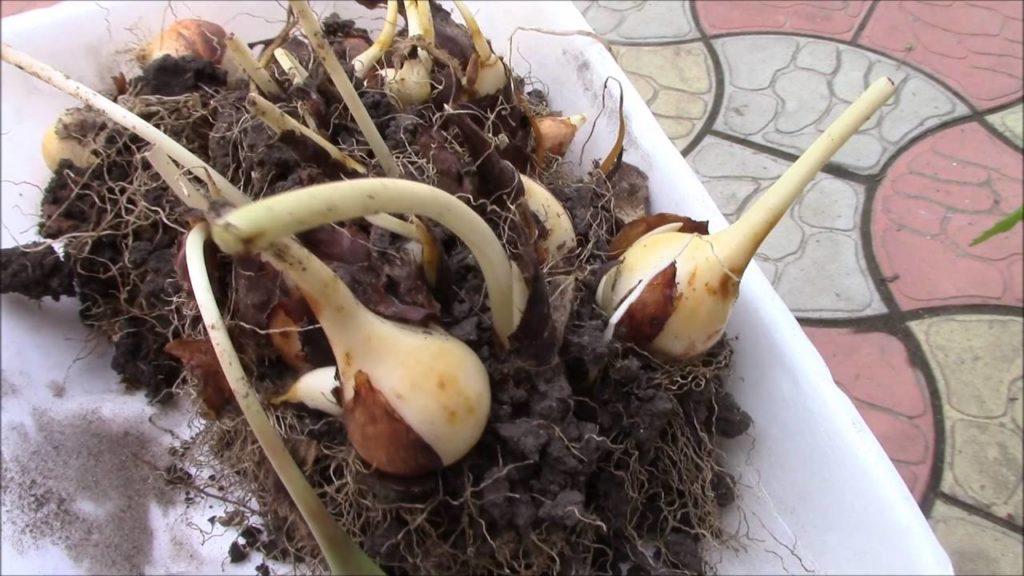
Digging out the bulbs
Many growers make a serious mistake - they start replanting tulips immediately after digging up. All summer tubers are in the soil. It will be correct if you leave the plants until the deciduous part is 2/3 dry. After that, the planting material is dug up and stored in boxes for several months. And when autumn comes, they are transplanted to a new place.
Drying
The dug out bulbs are cleaned of old scales and roots, and the children are also separated. Planting material is sorted by grade and laid out in boxes. Covering them is undesirable. Until September, the room temperature should be up to +20 degrees. A few weeks before disembarkation, it is lowered to +15 degrees.

The bulbs should be examined every few weeks. If traces of damage appear on them, for example, mold or rot, then such specimens are separated from healthy ones. The mold is wiped off with a dry cloth and then treated in a fungicide solution. If the rot is small, it is cut off, and the cut site is treated with brilliant green. If the tuber is badly damaged, it is thrown away.
Pre-planting of bulbs
Immediately before planting in a permanent place, the planting material is treated in a weak solution of potassium permanganate. The bulbs are immersed in water for 30 minutes. Then they are dried and transplanted to a new place. Before planting in a new place, it is worth preparing the soil. The soil is dug to a depth of 20 cm. Then the soil is watered with a solution of potassium permanganate to disinfect it.
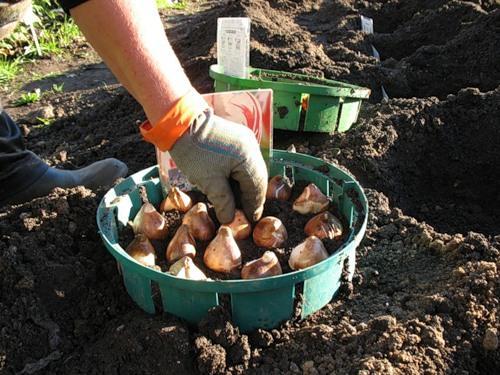
Landing in a new location
It is necessary to plant tulips in the place where they did not grow for at least 2 years. During this time, the soil managed to be filled with nutrients. The soil is loosened. Remove all weeds. Then they make grooves or holes in it, 3-4 cm deep. Washed river sand or small stones are laid out on the bottom. Drainage thickness is about 3 cm.
The distance between adult bulbs in a flower bed is 30 cm, between children - at least 15 cm.
After the autumn planting, the soil is not watered. Watering is carried out in 3-4 days, provided that it does not rain. Spring planting stages:
- In the spring, sprouted bulbs are planted in the soil, so in March they are transferred to pots and kept at home in a cool room.
- When the weather is warm outside, they dig up the soil. They make holes and fall asleep at the bottom of the drainage.
- The distance between the bulbs is the same as when planting in autumn.
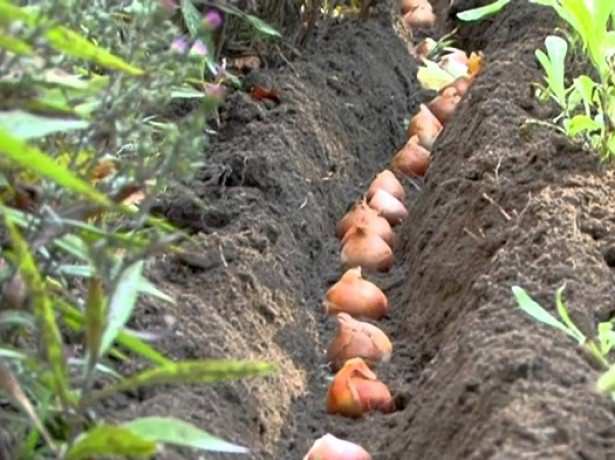
Immediately after planting, tulips are watered with heated water.
Further care of plants
After the autumn transplant, the shoots appear in the spring, after the snow melts. Depending on the region, this may be the end of March or April. In May, plants are already blooming in most areas.
Plant care:
- If mulch was introduced into the flowerbed in the fall, it is immediately removed so that the soil warms up faster in the sun.
- After the emergence of shoots, the ground around them is carefully loosened.
- Until the buds begin to appear, it is often undesirable to water the flower bed, abundant irrigation is carried out after the plant enters the flowering phase.
- Top dressing is applied to the soil only in the first half of the season, when the plants are just beginning to grow actively (you can make any fertilizers for flower crops).
When making top dressing, it is worth monitoring the external condition of the flowers.If you overfeed tulips, then they will begin to actively build up the deciduous mass and stretch upward. Nutrients are introduced no more than 2-3 times per flowering season.

Can blooming tulips be transplanted?
Transplanting flowering tulips is prohibited. This disrupts the natural processes that occur during flowering in plant tissues. Varietal varieties react especially painfully to such procedures.
If you still need to transplant a flowering plant, then the tulip is dug out of the ground with a large lump of soil and in this form is planted in a new place.
Major mistakes
Tulip planting errors include:
- Delaying the timing.
- Incorrect planting depth of the bulb (if you plant it too close to the surface, the plant will freeze in winter and die).
- Plant planting material with signs of damage, mold or rot.
Transplanting tulips is not that difficult. The main thing is to adhere to the rules of agricultural technology and try not to make mistakes.

